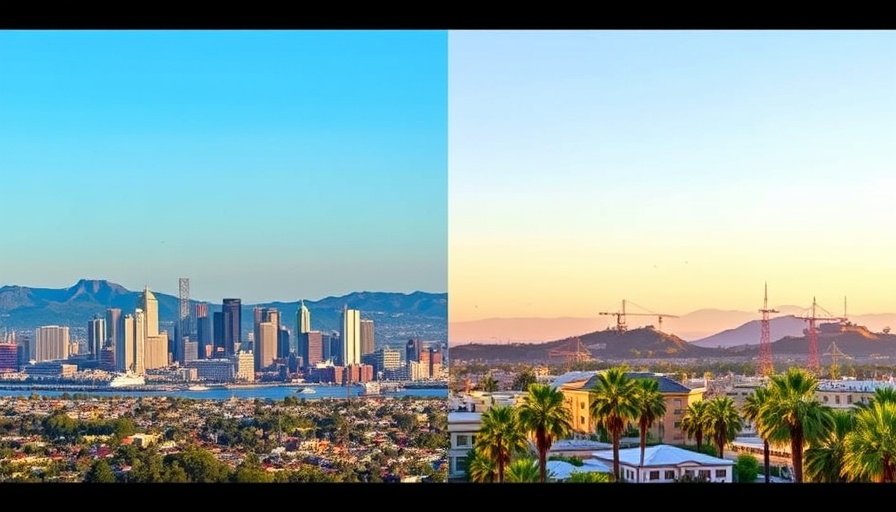
Which Southern California City Fits Your Lifestyle Best?
Choosing between Los Angeles and San Diego can be a pivotal decision for many looking for a new home. Each city has its own unique energy and appeal, making the choice both exciting and daunting. Los Angeles, known for its fast-paced lifestyle, offers a plethora of opportunities and a vibrant culture, while San Diego is celebrated for its beautiful beaches and relaxed atmosphere. As you weigh your options, it’s essential to consider the key differences in real estate, cost of living, and cultural vibes that each city presents.
Comparing Real Estate Markets: LA vs. San Diego
The Los Angeles real estate market boasts a stunning array of options influenced by its diverse neighborhoods ranging from ritzy Beverly Hills to the dynamic downtown area. The median home cost in LA hovers around $1,060,000, highlighting the demand for homes in this bustling metropolis. Renting is also quite expensive, with averages hitting $2,689 monthly for an apartment, particularly in popular areas like Santa Monica.
In contrast, San Diego offers a more inviting median home price of approximately $985,500. The market here reflects a different lifestyle, featuring homes with scenic ocean views and suburban comforts. Areas like La Jolla provide high-end options, yet there are also budget-friendly neighborhoods such as North Park and Chula Vista, perfect for those looking to enjoy Southern California without breaking the bank.
Cultural Flair: What Each City Brings to the Table
The cultural atmosphere in Los Angeles is electric, filled with the hustle of the entertainment industry, a thriving arts scene, and a myriad of dining experiences to explore. It’s a place where innovation flourishes and creativity thrives. Home to iconic landmarks, vibrant music venues, and diverse culinary offerings, LA is perfect for those who crave activity and excitement.
San Diego, on the other hand, prides itself on being a bit more laid-back. With its sunny beaches and community-oriented vibe, it invites outdoor enthusiasts and families alike to relax and enjoy a slower pace. The city also features cultural gems, including art districts, museums, and culinary delights that focus on fresh, local ingredients.
Deciding Factors in Cost of Living
Aside from housing prices, the overall cost of living should greatly influence your decision. Los Angeles traditionally has higher costs in various sectors, including groceries, utilities, and transportation. The hustle and bustle may come at a financial premium that some may find hard to justify.
Conversely, while San Diego is not without its expenses, many residents find its living costs are justifiable given the return on lifestyle. Many homes offer more outdoor space and proximity to coastlines, providing a different value proposition.
Future Insights: Real Estate Trends to Consider
Experts predict that the real estate market in both cities will continue to evolve, reflecting broader trends in remote working and lifestyle changes post-pandemic. As many opt for more space and a quality living environment, areas outside both city centers are seeing increased interest. Understanding emerging trends can help prospective homeowners capitalize on the best opportunities in either city.
Your Next Steps: Choosing the Right City
Now that you’ve weighed the pros and cons of Los Angeles versus San Diego, it's time to consider what lifestyle you desire. Are you drawn to the vibrant chaos of a city like LA, or do you envision a more serene life near the sandy beaches of San Diego? Each choice carries its own pros and cons, and it's important to match your personal values and lifestyle preferences with the characteristics of each city. Whether you focus on career opportunities, lifestyle vibes, or community engagement, your next step should reflect what you truly want in a living environment.
 Add Row
Add Row  Add
Add 




Write A Comment